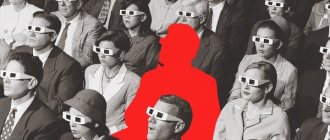The art of management implies solving specific tasks using all available resources (human, industrial, temporary). Personnel management is a special type of activity that implements and summarizes a huge array of issues that take into account the personal factor of administration. There are several styles of coordinating staff activities. Among them, one of the most interesting is the democratic management style. It has certain characteristics, pros, and cons that need to be considered in detail.
Definition
The democratic management style is characterized by the fact that various powers, initiatives and even responsibilities are distributed between the manager and his subordinates. Its main component is the manager’s interest in the opinions of employees. In difficult situations related to production, a collective decision is made. A democratic management style implies that in the course of constant communication and discussion, timely information is provided on all major issues that in one way or another relate to the functioning of the company. Awareness of employees (within the limits of their qualifications) strengthens the sense of belonging and self-worth of all members of the company’s team without exception.
Visionary Leadership
Visionary leadership is comparable to Lewin's authoritarian leadership style. Visionary leaders have a clear long-term vision and know how to inspire and motivate people.
This type of leadership is best suited when a company is undergoing major changes or when there is a need to receive clear direction. In these conditions, people are looking for someone they can trust to follow them into the unknown.
This style may be less effective when other team members are experts with ideas and opinions that differ from those held by the leader. Such specialists will not want to blindly follow a leader with whom they do not agree.
Read about how to build expert authority (and improve your leadership skills)
Benefits of Visionary Leadership:
- Members of the organization receive the necessary inspiration and understand their responsibilities.
- Temporary problems do not depress the leader because he is focused on the ultimate goal.
- Visionary leaders are able to provide backup options for solving problems associated with external factors, such as politics or the global situation.
Disadvantages of Visionary Leadership:
- There is no short-term vision of the situation on the part of the teams.
- Vision can be lost if it is too closely tied to the leader's personality.
- Visionary leaders tend to push away the ideas of other team members.
Features and characteristics of a democratic management style
Particular attention should be paid to the form of communication. It is in the nature of recommendations, requests, encouragements. And if necessary, an order is applied. A polite and friendly manager provides a favorable psychological climate at work. This type of manager prefers team play. The leader does not see himself as a puppeteer pulling the strings of power. The main motivation for such actions is that, under favorable conditions, employees themselves strive for responsibility, becoming involved in solving certain organizational issues. A space for maneuver appears in which self-control and self-government can be organized.
Within the framework of a democratic management style, two forms should be distinguished: consultative and participatory.
Each form has its own characteristics and characteristics.
Transformational Leadership
In addition to Lewin's leadership theory and emotional leadership theory, there are two other leadership styles worthy of your attention: transformational and transactional leadership.
Both of these styles were described by Bernard M. Bass, an American psychologist who studied leadership and behavior in organizations. Even if you haven't heard of them yet, you've probably already seen them in action.
The most popular theory of Bernard M. Bass is transformational leadership, which is a combination of four leadership qualities. This theory was formulated based on James McGregor Burns' 1978 concept in which he argued that leaders and their followers help each other improve morale and motivation.
Leaders with this style are trusted and respected by those who are willing to follow them. The four leadership qualities of transformational leadership are personal consideration, intellectual stimulation, inspirational motivation, and thought leadership. These four qualities determine how transformational a leader is.
Benefits of transformational leadership:
- Leaders with this style use coaching and rewards to inspire their team.
- Each employee is treated individually, allowing all their unique skills to be used effectively.
- Employees are united by a common cause, which ensures their growth within the company.
- Each employee is given freedom of action.
Disadvantages of transformational leadership:
- Small tasks are easily forgotten, making it difficult to bring a concept to life.
- The constant presence of a leader can lead to employee overload and burnout.
- The leader's goals must be consistent with the company's goals, otherwise risks may arise.
- All employees must respect the leader and agree with his approach.
Participative
There are situations when performers understand the situation better than the boss, taking into account all the subtleties and specifics of the process. This gives them the opportunity to creatively approach the solution of various tasks. But their implementation occurs in agreement with the manager and his full responsibility for the final result. This is possible in a team where relationships are built on the principle of trust in the professional literacy and competence of specialists.
This type of democratic management style assumes the nature of interaction based on the principle of coordinating activity of a leader who is ready to trust the opinion of the team. The functions of the manager include the overall coordination of all chains of the production process. The literal translation of the word “participatory” means involvement in any matter, as well as in decision-making and the implementation of work processes.
What is your leadership style?
As you can see, there are many different theories and concepts of leadership.
Lewin's theory divides all leaders into three categories, the most effective of which is collegial leadership. Emotional leadership theory provides six leadership styles that an effective leader uses at one time or another depending on the current circumstances. Bass offers us two opposing styles: transformational and transactional. In the first case, motivation is provided by the inspiration of employees, and in the second - by the carrot and stick method.
There is no one right leadership style, but there is a style that you are naturally inclined towards. Which style suits you best? What are you used to? Weigh the advantages and disadvantages to become a leader who sets up his followers for success. If your current leadership style isn't working, try a different approach.
Read 39 Business Quotes to Inspire Your Team
Comparison of species
The history of management does not have examples of the application of a pure type of any management style. It all depends on the goals set for the organization and the psychological climate that has developed in the team. When novelty and uniqueness are required, product quality is best suited to a democratic management style. Authoritarianism and strict control are suitable when using simple, quantity-oriented activities.
In a consultative form of management, the manager, holding meetings, selects the most suitable proposals, coordinating the actions of the team. Key decisions are made collectively, but control over the quality of execution and compliance with deadlines remains with the administration.
The main differences between the consultative and participatory forms lie in the degree of involvement of the workforce in all chains of the production process. With a participative leadership style, employees not only consult with the boss, but are also involved in setting goals with subsequent monitoring of their implementation within the competence of the employees. It differs from the liberal management style in that the manager takes an active part in the process, while the liberal avoids resolving the most pressing issues, trying to reduce personal responsibility. This happens for two reasons:
- Management falls under the complete influence of its own team.
- All members of the team are independent and creative.
Typically, such processes occur against the background of highly qualified workers.
The pros and cons of the democratic management style push the manager to use it in doses. The reason for this will happen a lot of circumstances.
Coaching
A leader-coach is able to identify the strengths and weaknesses of other team members and contributes to their development. In addition, such leaders know how to connect the skills of employees with the goals of the company.
This leadership style will be effective if the leader is creative, open to collaboration, and provides clear feedback to colleagues. It is also important that the coach knows when to step back and give the person space.
If you've ever dealt with a bad mentor, you know that coaching isn't for everyone. If you are unlucky with a coach, such leadership can turn into total petty control.
Benefits of coaching leadership:
- A leader-coach can create a motivating atmosphere in which participants are happy to work on a project.
- Clearly defined expectations help develop the skills of colleagues.
- This leadership style gives companies a competitive advantage because it provides productive conditions for qualified people who are willing to train others.
Disadvantages of coaching leadership:
- Coaching requires patience and time.
- This style is only effective if others are willing to accept it.
- Mentor leaders rely heavily on relationships, which can be difficult if there is no team chemistry.
pros
Like any other, the democratic management style is characterized by advantages and disadvantages. The first group includes the following parameters:
- the accuracy of the formulation of the company's goals and the responsibilities of employees;
- the general psychological climate in the team contributes to the formation of corporatism and an active position of employees;
- involvement in a common cause encourages the formation of friendly relations between the manager and subordinates;
- employees, within their competence, are able to make independent decisions to professionally perform their duties;
- the leader mainly resorts to persuasive leadership strategies rather than coercive ones;
- The democratic management style in management is the ability to solve rare, exclusive problems in the least amount of time using non-standard methods.
Flaws
Compared to an autocratic leadership style, management based on democratic principles seems ideal. However, this is not quite true.
The disadvantages of this technique include the following:
- the decision-making process can be drawn out and slow;
- sometimes in a team, excessive freedom can lead to some lack of obligation among subordinates;
- when discussing various issues, difficulties and misunderstandings may arise, which makes it difficult to make the right decision;
- This style of leadership is ineffective in complex crisis situations when decisions must be made quickly.
Minuses
The main disadvantages of using a democratic management model are the following:
- discussion and decision-making by the team, as usual, takes a lot of time, which is an unaffordable luxury in a stressful situation of the organization’s management;
- incorrect application of strategy by the leader leads to disorganization and indiscipline of the team;
- In some situations, making the right decision becomes problematic due to the difficulties that arise.
Inspire employees with effective leadership style
Leadership style is a classification of how leadership skills are used in practice. As we already know, leaders have many strengths. They dedicate themselves to a variety of tasks, from motivating employees and thinking creatively to solving problems and taking risky decisions. At the same time, there are no two absolutely identical leaders: the approach to the same set of tasks for different leaders can differ significantly.
Leaders' job is to ensure that employees achieve the organization's goals.
Work management software can help you keep your team working in a consistent manner, no matter where you lead them. Try work management software
Examples from life
Knowledge of the basics and rules of leadership styles is not a guarantee of successful company management, since they require reasonable application in the current situation, taking into account all factors of internal and external space. In this regard, the thoughtless hope that the democratic style of management contributes to the resolution of controversial (mostly critical) situations leads, as a rule, to an apocalypse rather than an apogee. Practice shows that only a skillful, timely change in leadership style to the one most suitable for the current situation allows one to emerge from any “storms” in the business sphere. Examples of successful application of the democratic management style indicate its great potential in the field of innovation and development.
Thus, during the stagnation of the BMW military campaign, a decision was not made to close it due to the cohesion and enthusiasm of the workforce. The employees committed to release a new brand of passenger car (to replace aircraft engines), developing lines of different classes. This is how the cars of the famous BMW brand saw the world.
According to the head of Philips, Albert van Griede, the fundamental principle of his company (personal interest) is only possible with a democratic management style.
As can be seen from the examples, the type of leadership under consideration is successfully used in creative and artistic fields of activity. However, there are many more examples of mixed style.
Decisions must be made collectively! Let the boss ask each employee to speak up.
Recommend that he hold regular department meetings, set dates, and announce issues in advance. Most likely, subordinates who are not accustomed to democracy will not immediately speak out. They probably - they wait for the leader to give instructions. Let the boss act like this: he doesn’t offer solutions, but in turn asks each subordinate, calling him by name, to express his ideas on how the problem can be solved. Very soon, employees will begin to evaluate each other’s opinions and join in the discussion of the issue.
Case Study
In the marketing department, an enthusiastic employee bombarded the manager with a lot of ideas, and he had to explain for a long time why this or that idea was unpromising. But when the three divisions were merged, the manager could no longer devote much time to the enthusiast and suggested discussing his ideas at general department meetings, the agenda of which included mainly strategic issues. At the next meeting, the activist proposed an idea, and the head of the department turned to one of the employees: “Tell me, which client groups need to be studied before starting the project?” Then he asked the second: “Who most often uses social networks to search for technical innovations?” Then he brought others into the discussion. After listening to everyone, the enthusiastic employee was forced to admit: his idea was not that good. But he promised to finalize it, and at the next meeting he presented a thoughtful and balanced proposal, which was approved and later implemented.
Risk 1: The meeting turns into endless chatter. Encourage the manager to be tolerant of the fact that at the first meetings employees will speak at length and on a variety of reasons. After all, before they were not interested in their opinion. And now they are in a hurry to speak out.
How to act as a leader: let him combine the questions into broad topics and announce: “I understand that this is very important to you. Let's schedule another meeting and discuss this topic separately. “We won’t consider this now.”
Risk 2. Some employees are afraid to express their special position. They confuse openness with confrontation and almost denunciations, and are afraid of provoking a conflict.
How to act as a manager: explain that expressing an opinion that differs from the opinion of a colleague or manager is not a denunciation or an attack against him. On the contrary, it is a demonstration of trust and readiness to work out the right solution.
Risk 3. There will be those who will remain silent. And when a problem arises, they will say: “I knew this would happen.”
How to act as a leader: explain: such a position is sabotage. If a person notices an error during the discussion, he should report it. Some managers even punish harmful silence.
Correlation between management style and team productivity
A correctly chosen company management strategy, taking into account the personal potential of both employees and managers, allows you to “work miracles” in all areas of business. The main role in choosing a management style is always given to the subjective attitude of the manager towards the team, the ability to adequately assess the impact on employees using the chosen methods. But even in conditions of complete stability, errors are possible, which, as a rule, primarily affect labor productivity. In this regard, it can be emphasized that the issue of choosing a management style for a manager is a task that requires a primary solution.
How does a democratic regime differ from a liberal one?
Sometimes the democratic style is confused with the liberal style, since both of them are characterized by freedom of action and delegation of responsibility to employees. But still they differ significantly. If we compare them with each other, then the liberal one is “freer”, control is minimized, and there is no vertical hierarchy of management.
If in a democratic team the boss makes decisions together with his subordinates, then in a liberal team the subordinates make them independently.
The leader acts more like a coordinator, helping all participants in the process move in the same direction and pursue a common goal.
This style works well in the creative field. Strong pressure from above leads creative people to stupor and resistance, while freedom of expression, on the contrary, helps to find new ideas.
Now you see that each of these styles has the right to life - you just need to determine where and which one to use. Even in one company, you can use all three, if we are talking about production shops, the management team and the creative department.
The democratic management style is relevant in modern business because it fulfills the tasks assigned to it: improves the atmosphere of communication, increases discipline and motivation, and enriches the company with fresh thoughts. It is wrong to believe that freedom breeds anarchy. Relaxing control and trust, on the contrary, can open up many new opportunities for both the leader and his subordinates.
Now that you know both sides of the democratic management style, you can find your universal management style!
Photo by Vasily Smirny, Kublog The leader's efforts are concentrated on the task that needs to be accomplished, while, as Bisani states, the leader: Research by Halpin-Wiener and Peltz shows that such leaders: With this management style, the focus is on employees with their needs and expectations . According to Bizani, head: Confirmed profile Outsourcing of professionals for business with a service for finding self-employed performers of work for any period.
Typical mistakes of a manager
There are cases when, for example, a democratic management style is desirable, moreover, it is the only development strategy for the team, and the enterprise as a whole, but the personal characteristics of the person in charge do not fit into the specified framework. In this case, annoying errors appear that stall the business and have a bad effect on the reputation:
- adherence to the principle “if you want to do it well, do it yourself” is the first mistake of managers at various levels;
- in contrast to the first, the principle “no matter what is done, everything is for the better” also leads to the collapse of the management system;
- bias due to personal hostility is something that a reasonable manager will never allow himself to do, because an employee is needed to help the company develop using their potential;
- “mental traps” of management can rightfully be considered the most annoying mistake;
- a painful perception of dissent that misses its potential and benefits;
- partial or selective ignoring of employee suggestions;
- disrespect for the employee’s personality, manifested in public censure of his opinion;
- The illogic of a manager’s actions always leads to decline rather than development.
Collegiality is the basis for the successful development and functioning of companies.
Develop uniform rules for everyone, and make facts of violation public
This will serve as a counterbalance to the liberties that democracy gives to employees, and will remind them that there are also requirements, restrictions, and responsibilities. The rules must be the same for everyone, regardless of position, length of service and authority. Let the manager demand that everyone adhere to the rules, observe discipline and work routine. The manager must act harshly against violators and make the facts of violations public. Everyone should know who is harming the common cause . In this case, the leader will get rid of the role of gendarme. The culprit will now be punished by his colleagues, collectively condemning him. This will show signs of self-government and mutual control .
Case Study
In an advertising and industrial holding, only workers in the production unit are required to come to work by 8.00 without delay - they work strictly according to the clock and at 17.00 the equipment stops. Other units were given relief. Office workers arrive at 9.00, and creative people are allowed to start work at 10.00. And not later. The HR service and department heads monitor attendance. An employee will be deprived of his bonus for being late. Even if it's a designer or other creator.











